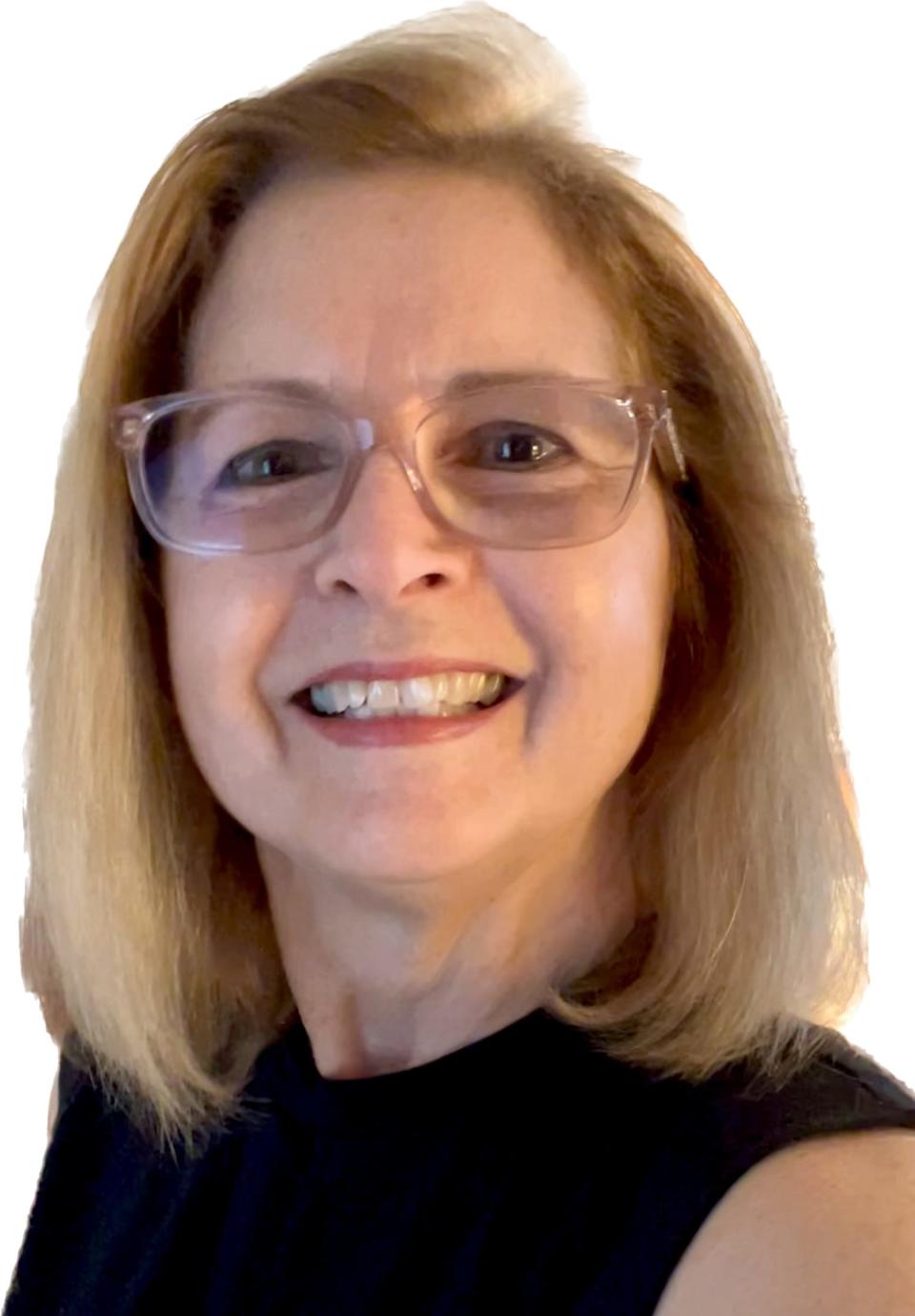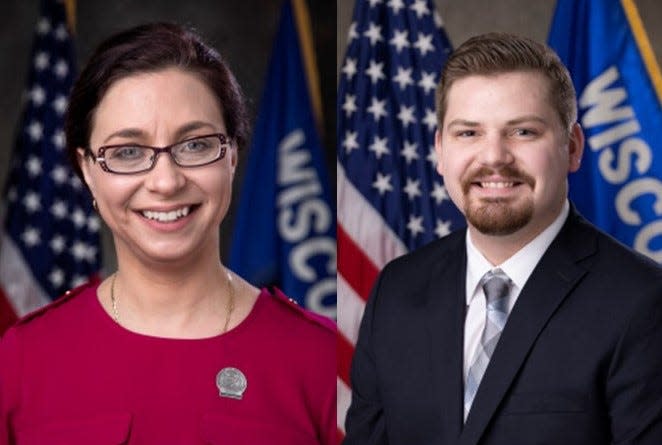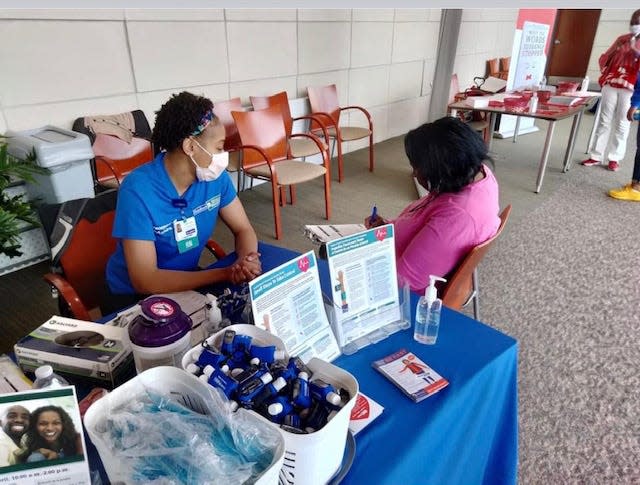I followed the rules and still got breast cancer. New screening bill will help others catch it.
Editor's note: First lady Jill Biden will visit Madison today to highlight the importance of cancer screenings as part of White House Cancer Moonshot, a national effort to prevent cancer deaths first launched when Joe Biden was vice president.
I followed all the rules. At 40, I went for my very first mammogram, and did so again every year as recommended. As far as I knew, I wasn’t at higher risk. No one in my family had ever been diagnosed with breast cancer. I exercised, ate healthy food, and got as much sleep as a working mother of three could expect. Each year, my mammogram came back the same: all clear.
But “all clear” was only part the story. It turns out that I have dense breast tissue, just like about half of women over age 40. What I didn’t know was that with standard mammograms, finding breast cancer in dense breasts is like finding a snowflake in a snowball. It’s nearly impossible. Additionally, women with dense breasts are 4-6 times more likely to get breast cancer than other women.

When I asked my doctor what dense breasts meant on my mammogram results, I was told that it wasn’t something to worry about. But just five weeks after a clear mammogram in 2010, I was told that I had breast cancer. More frightening still, I was soon told that my breast cancer had metastasized and was incurable. Ultimately, I had a 50% chance to live through the next three years.
Had I known then what I know now, I would have pressed for an ultrasound or MRI after the initial clear mammograms. My life and the lives of countless women could have been saved with an earlier diagnosis by additional imaging tools that existed long before we were diagnosed with terminal breast cancer.
More than 5,000 women will be diagnosed with breast cancer in Wisconsin this year
In Wisconsin alone, more than 5,000 women will be diagnosed with breast cancer this year, and more than 700 of them will die from the disease. Every 13 minutes, someone in our country dies of metastatic breast cancer. But it doesn’t have to be this way. As medical researchers continue their work to find a cure, legislators in Madison are coming together to increase access to life-saving breast imaging with a bipartisan bill that is literally a matter of life and death.

Senate Bill 121, authored by Sen. Rachael Cabral-Guevara, R-Appleton, and Rep. Nate Gustafson, R-Neenah, will eliminate patient cost-sharing for those with dense breasts and others at increased risk of breast cancer who need additional imaging. More than 70% of breast cancers occur in dense breasts, and for many, a diagnosis comes only after symptoms occur and cancer has metastasized.
Unfortunately, additional imaging often costs patients several hundreds of dollars, making it a financial hurdle for those in need of lifesaving tests. Finances or income status should never determine access to medical treatment, especially for cancer imaging. For so many women, paying over $1,000 for these tests isn’t an option, making this legislation critical.
Nominal cost for scans in cases where breast cancer symptoms not visible
Opponents of the bill make the misleading claim that no-cost coverage for additional imaging will unreasonably increase insurance premiums. In reality, early detection is the most cost-efficient option, as care for metastatic breast cancer patients can cost upwards of $1 million annually. If my cancer had been caught at Stage 1, my total treatment costs would have been around $100,000. But my cancer was missed by 15 annual mammograms, and it now costs between $750,000 to $1million per year to keep me alive.

Studies have shown that the estimated impact of no-cost diagnostic imaging on insurance premiums is just a $0.04-$0.07 increase per member per month. I would argue that the chance to save the life of a loved one is worth an extra $0.84 per year.
Even today, women who are following the rules – like I did – will receive mammogram results where cancer goes undetected. SB 121 is a lifesaver for every woman with dense breasts or who is having trouble swimming in a sea of financial obligations. It can take away the death sentence from these women.
In just the past few months, several states have added insurance coverage for supplemental or diagnostic imaging, and similar breast imaging legislation has been passed in nearly half the country. It’s time to do the same in Wisconsin. SB 121 is backed by leading healthcare organizations and already co-sponsored by more than one-third of the Legislature. It’s encouraging to see this level of bipartisanship.
More: Jill Biden will visit Wisconsin to highlight cancer screenings, attend fundraiser with Tammy Baldwin
This bill is not going to save me, but it will save the lives of others. One in eight women will be diagnosed with breast cancer at some point in their lives. I don’t want anyone else and their families to go through the same things my family and I did. There are readily available options to catch this disease early. I encourage the Wisconsin Legislature to pass this vital and life-saving bill. Those who support this cause can visit EarlyDetectionWI.com to learn more and get involved.
Linda Hansen is a retired attorney and breast cancer patient advocate who lives in Franklin.
This article originally appeared on Milwaukee Journal Sentinel: Jill Biden's Madison visit highlights importance of cancer screenings

